Personalized Approaches Driving Customer Retention Success

Personalization has become a key driver of customer retention strategy, shaping how businesses build loyalty in 2025. Statistics show that 62% of business leaders credit personalization with improved retention, while 60% of shoppers are likelier to return after tailored interactions. Yet, 62% of consumers would abandon brands lacking personalized experiences. Studies reveal that 80% of customers value personalized purchasing, emphasizing its importance for fostering lasting relationships. Companies like Samsung leverage solutions from Sobot to unify customer interactions, ensuring seamless, tailored responses that enhance satisfaction and retention. By prioritizing personalization through Sobot, you can create emotional connections that inspire loyalty and drive growth.
Why Personalization is the Cornerstone of Customer Retention Strategy

The evolution of customer expectations in a hyper-personalized era
Customer expectations have shifted dramatically in today’s hyper-personalized world. People now demand tailored experiences that resonate with their unique preferences. Studies reveal that 62% of consumers expect brands to deliver personalized content, while 67% feel frustrated when interactions lack relevance. This frustration often leads to disengagement, making personalization essential for customer retention.

For instance, 49% of customers are more likely to become repeat buyers when brands offer personalized experiences. This highlights the importance of understanding your audience and delivering content that aligns with their needs. Tools like Sobot’s AI Chatbot can help you achieve this by analyzing customer data and providing tailored interactions across multiple channels. By meeting these expectations, you can foster loyalty and ensure long-term engagement.
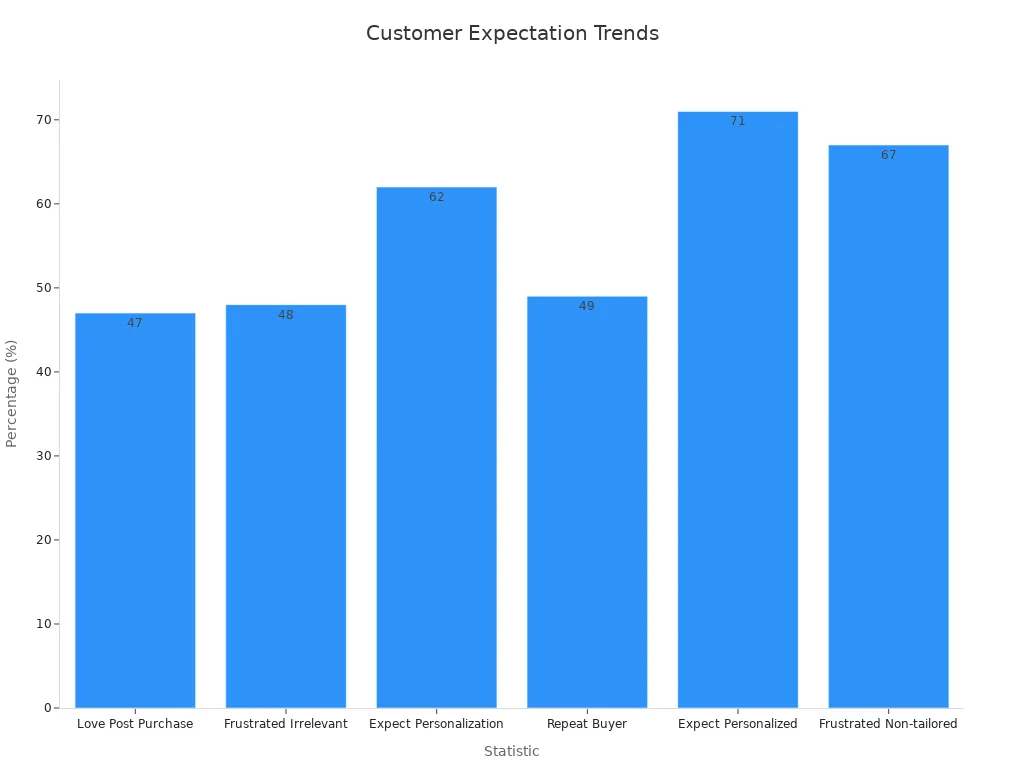
Data-driven personalization: Insights into loyalty and revenue growth
Data-driven personalization is a game-changer for both loyalty and revenue. Research shows that retaining an existing customer is 5-7 times cheaper than acquiring a new one. Even a 5% increase in retention can boost profits by over 25%. Additionally, 80% of consumers are more inclined to purchase when brands provide personalized experiences.
Amazon’s recommendation engine is a prime example. It accounts for 35% of the company’s total sales, showcasing the power of data in driving revenue. By leveraging tools like Sobot’s omnichannel solutions, you can unify customer data and create personalized campaigns that enhance customer retention. These strategies not only improve loyalty but also contribute to significant revenue growth.
Emotional connections: Building trust and fostering retention
Building emotional connections with your customers is crucial for fostering trust and retention. Emotionally connected customers have a 306% higher lifetime value, according to Harvard Business Review. Furthermore, 76% of customers will continue doing business with a brand if they feel appreciated, and 87% are more likely to recommend it to others.
Personalized interactions play a key role in creating these emotional bonds. For example, Sobot’s marketing solutions allow you to send targeted offers and messages that make customers feel valued. By showing genuine care and understanding, you can strengthen relationships and ensure long-term loyalty.
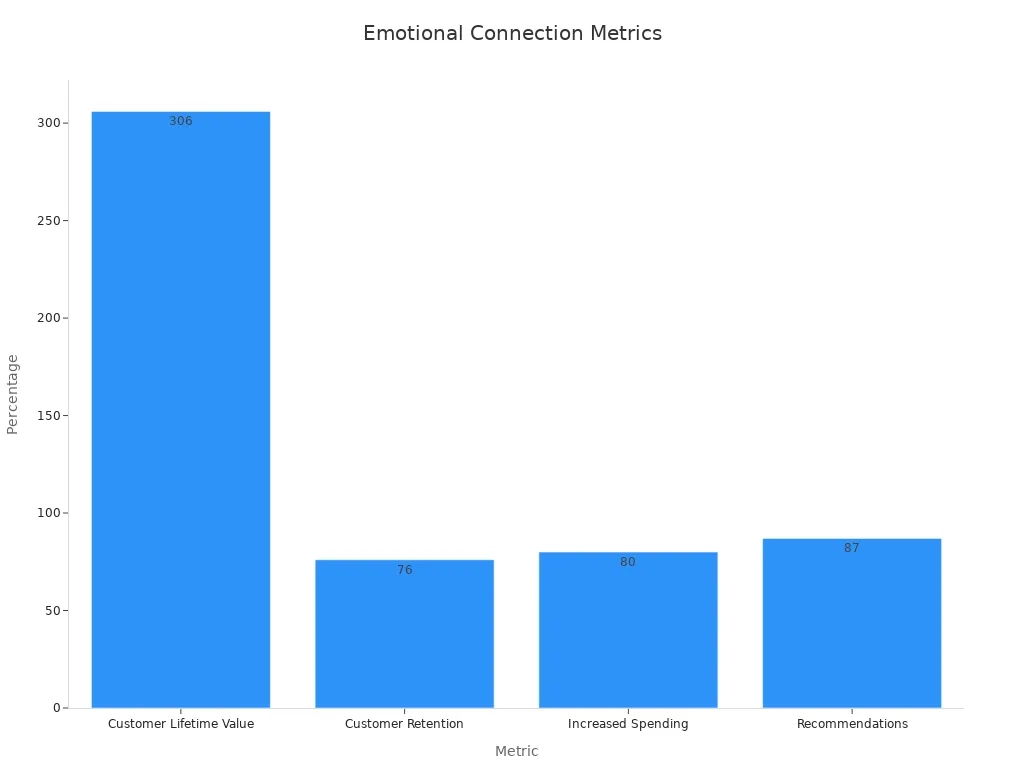
Key Personalized Strategies Driving Retention Success
Emotional loyalty programs: Strengthening customer bonds
Emotional loyalty programs go beyond transactional rewards to create deeper connections with your customers. These programs focus on experiential rewards that resonate with your audience's values and emotions. For example, Starbucks excels by using customer data to offer personalized rewards and timely notifications. This approach fosters a sense of immediacy and connection, making customers feel valued.
Brands that incorporate surprise and delight tactics, such as exclusive promotions or unexpected gifts, can further enhance these bonds. Emotional loyalty programs also thrive on consistent communication and empathy. By leveraging innovative technologies like Sobot’s marketing solutions, you can craft personalized customer experiences that build trust and satisfaction. These strategies not only improve retention but also encourage customers to advocate for your brand.
Tip: Focus on creating experiential rewards that align with your customers' preferences. This approach can significantly boost retention and loyalty.
AI-driven personalization with tools like Sobot Chatbot
AI-driven personalization has revolutionized how businesses engage with their customers. Tools like the Sobot Chatbot enable you to deliver personalized experiences at scale. This AI-powered solution analyzes customer data to provide tailored interactions across multiple channels, including WhatsApp, SMS, and live chat. Its multilingual capabilities ensure seamless communication, while its 24/7 availability enhances customer satisfaction.
According to McKinsey’s 2024 Customer Experience and Loyalty Report, businesses that adopt personalized, experience-driven strategies see significant improvements in retention. Additionally, 95% of buyers expect personalized interactions by 2025. Sobot Chatbot meets these expectations by offering smart self-service and proactive messaging, which can boost conversions by 20%.
| Evidence Type | Statistic/Insight |
|---|---|
| Engagement Increase | 30% engagement spikes for SMEs |
| Revenue Growth | 40% more cash for retailers excelling in personalization |
| Market Growth | 30%+ CAGR through 2025 |
| Marketer Adoption | 88% of marketers use AI daily |
| Customer Expectation | 95% of buyers expect personalized interactions by 2025 |
| Traffic Increase | Small businesses see 150% traffic jumps |
By integrating tools like Sobot Chatbot, you can meet customer expectations, improve retention, and drive measurable growth.
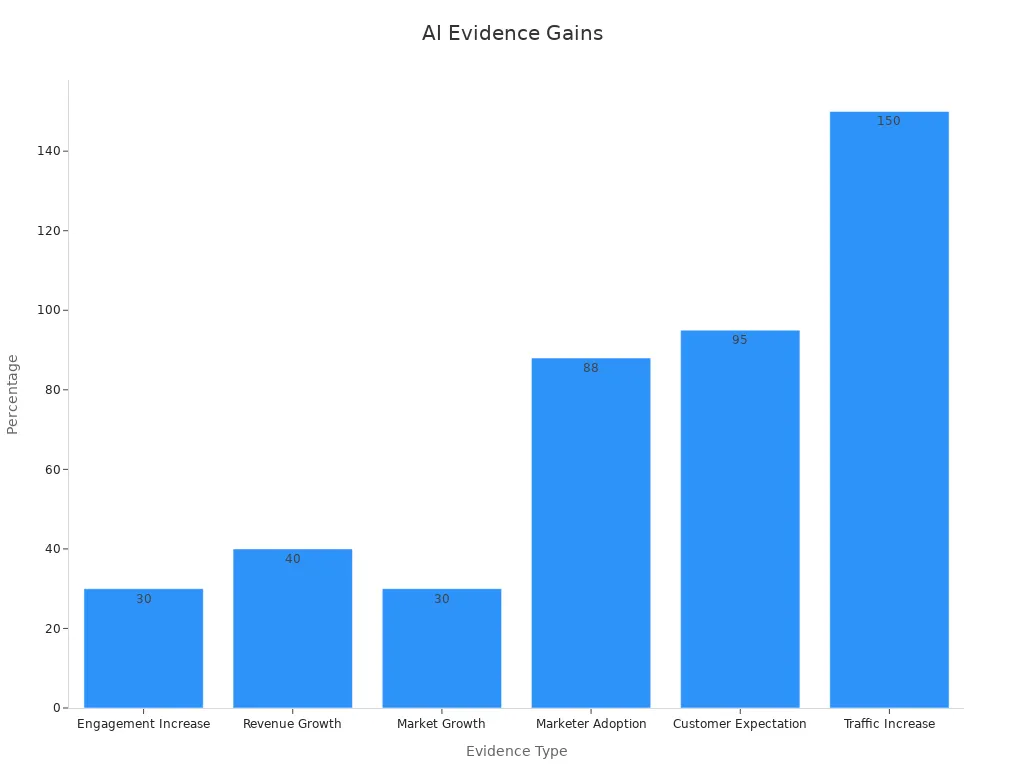
Gamification: Engaging customers through interactive experiences
Gamification transforms routine interactions into engaging experiences, making it a powerful tool for customer retention. By incorporating game-like elements such as points, badges, and leaderboards, you can motivate customers to interact with your brand more frequently. For instance, Duolingo’s gamified approach helped it grow its user base to over 300 million, while Microsoft saw a 3.5x increase in employee engagement through similar strategies.
Companies using gamification report a 50% increase in productivity and a sevenfold boost in profitability margins. In retail, gamified strategies have led to a 700% increase in customer acquisitions. Sobot’s marketing solutions can help you design gamified campaigns that not only attract new customers but also retain existing ones through experiential rewards and interactive challenges.
| Company | Impact of Gamification |
|---|---|
| Duolingo | User base grew to over 300 million |
| Foursquare | Expanded by 10 times in five years |
| Microsoft | 3.5 times more employee engagement |
| Roblox | Active users increased to over 90 million in a year |
| Autodesk | 40% increase in trial usage, 15% increase in conversion |
Note: Gamification works best when it aligns with your customers' interests. Use it to create personalized customer experiences that keep them engaged and loyal.
Tiered benefits: Rewarding loyalty with exclusive perks
Tiered loyalty programs are a proven way to reward customers while encouraging long-term engagement. These programs divide rewards into levels, with each tier offering increasingly exclusive perks. This structure motivates customers to remain loyal and strive for higher tiers, enhancing retention.
Psychological principles play a significant role in the success of tiered benefits. For example:
- Endowment Effect: Customers value their loyalty status and feel a sense of ownership, increasing their engagement.
- Loss Aversion: The fear of losing their current tier drives customers to maintain or increase their activity.
- Goal Gradient Effect: Customers put in more effort as they approach the next tier, boosting their interaction with your brand.
| Psychological Principle | Description |
|---|---|
| Endowment Effect | Customers value their status in a loyalty program more highly, motivating them to make additional purchases to reach higher tiers. |
| Loss Aversion | The fear of losing status encourages customers to engage more to maintain their current tier. |
| Goal Gradient Effect | As customers approach a goal, they increase their efforts, which loyalty programs can leverage by showing progress towards the next tier. |
| Scarcity and Exclusivity | Higher tiers offer exclusive rewards, making them more desirable and motivating customers to climb the loyalty ladder. |
Sobot’s marketing solutions can help you design and manage tiered loyalty programs effectively. By leveraging its unified customer data platform, you can create personalized campaigns that highlight progress toward the next tier. For example, sending targeted messages about exclusive perks available at higher tiers can inspire customers to engage more frequently. This approach not only strengthens customer relationships but also drives retention by making customers feel valued and appreciated.
Tip: Use tiered benefits to create a sense of exclusivity. Highlight the unique rewards available at higher levels to motivate customers to stay loyal.
Real-world examples: How brands like Samsung excel in retention
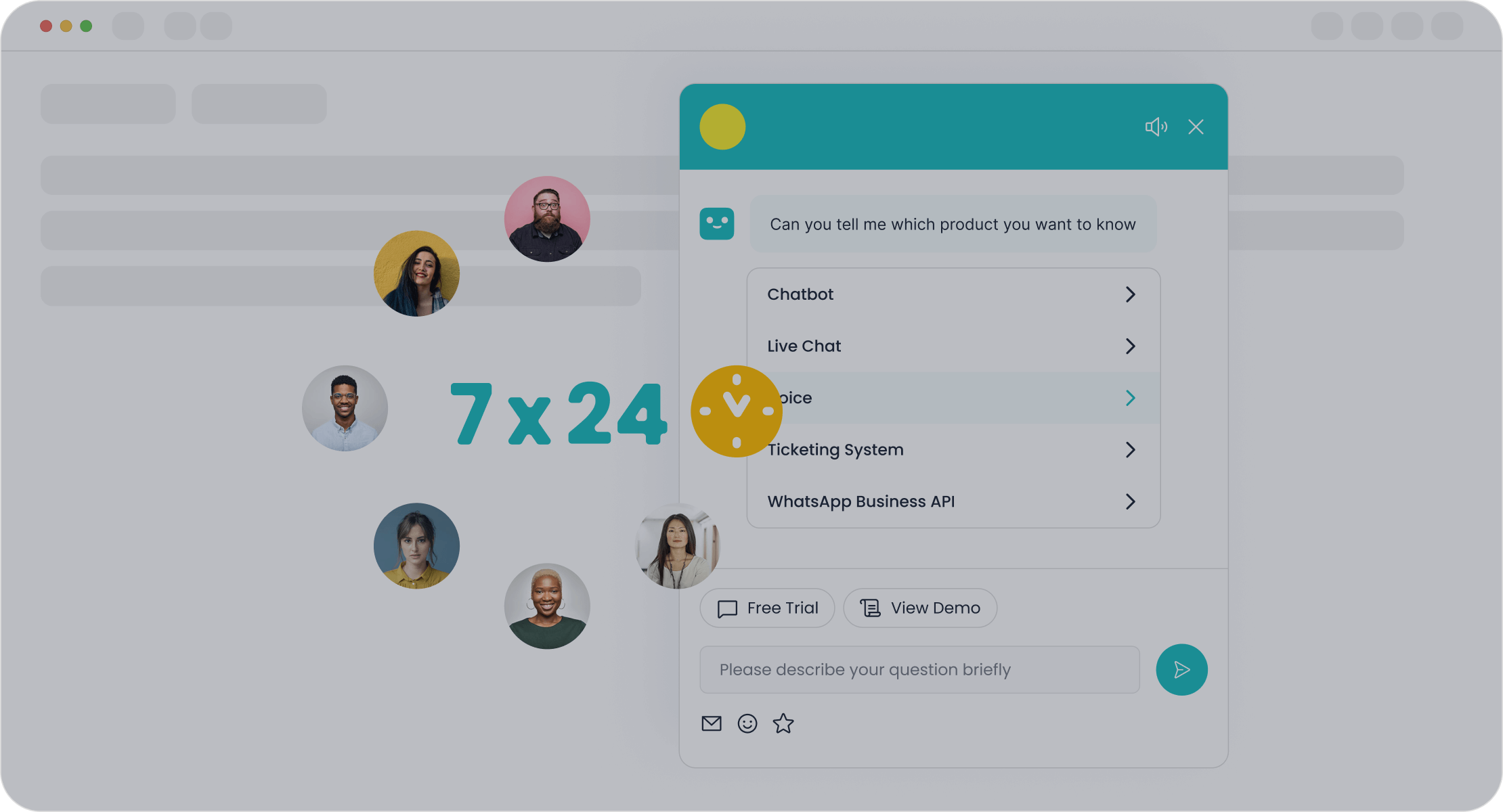
Samsung provides an excellent example of how to use personalized strategies to boost customer retention. The company faced challenges in managing a high volume of inquiries across multiple channels. By implementing Sobot’s all-in-one contact center solution, Samsung unified its communication channels and improved data connectivity. This allowed agents to access comprehensive customer histories, reducing repetitive interactions and enhancing service quality.
The results speak for themselves. Samsung achieved a 97% customer satisfaction rate and increased agent efficiency by 30%. The company also introduced customized services for VIP customers, such as video support, which strengthened loyalty among its most valuable customers.
| Metric | 2015 Score | 2017 Score | Current Score (2023) | Industry Average |
|---|---|---|---|---|
| Net Promoter Score (NPS) | 67 | 44 | 47 | 55 |
| Customer Loyalty (Consideration) | N/A | N/A | 90% | N/A |
| Trust in Future Products | N/A | N/A | 63% | N/A |
Samsung’s success demonstrates the power of personalized approaches in driving retention. By using tools like Sobot’s AI Chatbot and marketing solutions, you can replicate this success. These tools enable you to deliver tailored interactions, improve efficiency, and build trust with your customers. Whether you’re managing inquiries or designing loyalty programs, personalization is key to fostering long-term relationships.
Note: Personalized strategies like Samsung’s can help you achieve higher customer satisfaction and retention rates. Focus on unifying your communication channels and offering tailored experiences to stand out.
The Role of Technology in Personalization and Retention
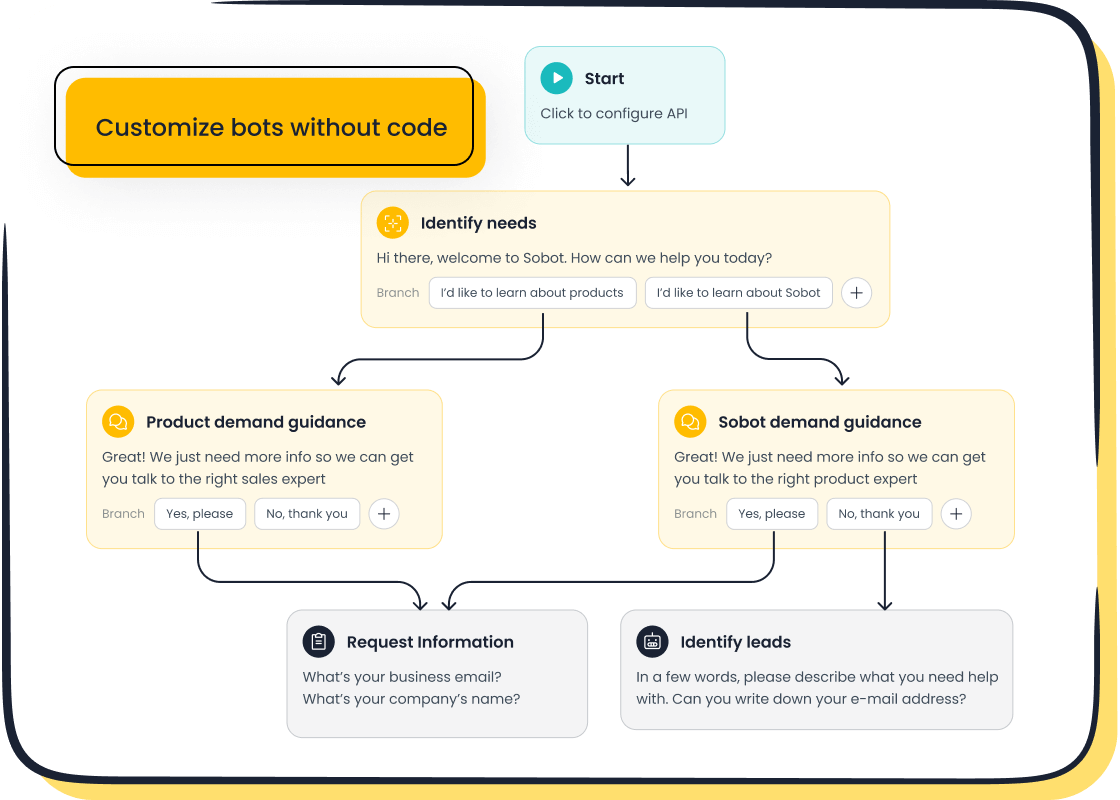
AI and machine learning: Predicting customer needs with precision
AI and machine learning have transformed how businesses predict customer needs, making retention strategies more effective. These technologies analyze vast amounts of data to identify patterns and forecast future behavior. For example, predictive analytics can help you anticipate when a customer might disengage, allowing you to take proactive steps to retain them. Machine learning also enables personalized retention efforts, improving satisfaction and loyalty.
- Leveraging AI for churn prediction helps you identify disengaged users early.
- Predictive analytics forecasts customer behavior, enabling proactive actions.
- Data-driven insights allow you to craft personalized experiences that enhance loyalty.
The increasing use of AI in customer retention ensures that businesses can anticipate needs and deliver tailored solutions. Tools like Sobot’s AI Chatbot utilize machine learning to provide real-time assistance, boosting customer satisfaction and retention. By focusing on experiential rewards and personalized interactions, you can create lasting connections with your audience.
Sobot's omnichannel solutions: Enhancing customer interactions
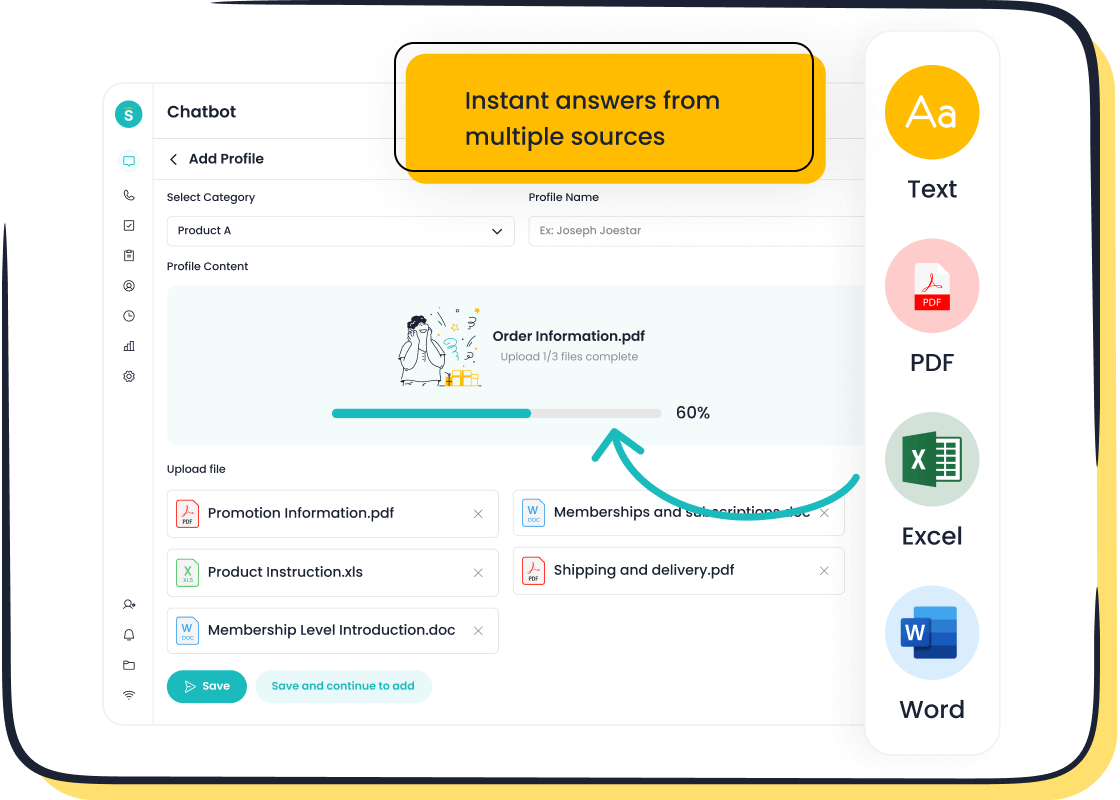
Sobot’s omnichannel solutions redefine customer interactions by unifying communication channels into a seamless experience. These solutions integrate advanced technologies like predictive intelligence and natural language processing to deliver personalized recommendations and proactive problem-solving. For example, CRM integration ensures that agents have access to comprehensive customer data, enabling efficient and tailored responses.
| Key Feature | Description |
|---|---|
| Predictive Intelligence | Uses deep learning algorithms for personalized recommendations |
| Proactive Problem-Solving | Anticipates issues based on customer data and behavior patterns |
| CRM Integration | Seamlessly connects with customer relationship management systems |
| Advanced NLP | Sophisticated natural language processing for nuanced understanding |
| Continuous Improvement | Learns and improves from each interaction |
| Data Analysis | Comprehensive customer data analysis for insights and optimization |
Sobot’s solutions empower you to deliver exceptional customer experiences, whether in retail or other industries. By leveraging these tools, you can enhance retention and build stronger relationships with your audience.
Mobile-first strategies: Meeting customers where they are
Mobile-first strategies have become essential for reaching customers effectively. With more than half of all web traffic coming from mobile devices, businesses must prioritize mobile-friendly designs. These strategies improve user experience by focusing on essential features for mobile users, such as faster load times and intuitive navigation. For example, smartphone conversion rates in retail average around 3%, with even higher rates during seasonal sales.
| Evidence Type | Statistic/Insight |
|---|---|
| Mobile Web Traffic | More than half of all web traffic is mobile. |
| Mobile Conversion Rates | Smartphone conversion rates for retail average around 3%, with higher rates during seasonal sales. |
| User Experience Improvement | Mobile-first design improves user experience by prioritizing essential features for mobile users. |
| SEO Performance | Mobile-first designs align with search engines’ mobile-first indexing policies, enhancing rankings. |
Sobot’s omnichannel solutions align perfectly with mobile-first strategies. By integrating mobile-friendly tools like WhatsApp API and AI Chatbot, you can meet customers where they are and deliver personalized experiences that drive retention. This approach ensures your brand stays relevant in an increasingly mobile-driven world.
Data analytics: Turning insights into actionable retention strategies
Data analytics plays a vital role in transforming raw information into actionable strategies that improve customer retention. By systematically analyzing customer data, you can uncover pain points, desires, and behaviors that shape their experiences. For example, identifying patterns in purchase history or support interactions helps you understand what your customers truly need.
Insights from data analytics allow you to create personalized marketing campaigns tailored to individual preferences. Imagine a scenario where a customer frequently purchases eco-friendly products. By using data, you can send them targeted offers for sustainable items, increasing their satisfaction and loyalty. This approach not only strengthens your relationship with the customer but also boosts retention rates.
Advanced tools make this process even more efficient. Automation simplifies the analysis of large datasets, while semantic analysis converts qualitative feedback into structured themes. These technologies enable you to act quickly and effectively. For instance, Sobot’s omnichannel solutions integrate data analytics to provide a unified view of customer interactions. This helps you craft strategies that address specific needs, ensuring a seamless experience across all touchpoints.
Discovering trends in customer behavior also informs proactive retention strategies. If data shows a drop in engagement, you can intervene with timely offers or personalized messages. Businesses that leverage these insights often see higher retention rates and improved customer satisfaction. According to studies, companies using data-driven strategies report a 25% increase in profits due to better retention efforts.
By turning insights into action, you can create meaningful connections with your customers. Data analytics empowers you to anticipate their needs, deliver personalized experiences, and foster long-term loyalty.
Balancing Personalization with Consumer Trust
Addressing data privacy concerns in 2025
Data privacy remains a top concern for customers in 2025. Many people hesitate to share personal information due to fears of misuse. Research shows that 94% of organizations believe customers will not buy from them if they fail to protect data properly. Furthermore, 71% of consumers would stop doing business with a company that mishandles sensitive data. These statistics highlight the importance of addressing privacy concerns to maintain customer retention.
Investing in robust data protection measures builds trust and loyalty. For example, 80% of organizations report increased customer trust after prioritizing data privacy. By implementing secure systems like Sobot’s omnichannel solutions, you can safeguard customer data while delivering personalized experiences. This approach ensures that customers feel confident sharing their information, which is essential for fostering long-term retention.
| Statistic | Source |
|---|---|
| 94% of organizations say their customers would not buy from them if they did not protect data properly. | Cisco |
| 71% of consumers say they would stop doing business with a company if it mishandled their sensitive data. | McKinsey |
| 80% of organizations report increased customer loyalty and trust as a result of their investments in data privacy. | Cisco |
Transparency and ethical data usage: Building trust with customers
Transparency is the foundation of ethical data usage. Customers want to know how their data is collected, stored, and used. According to surveys, transparency ranks higher than privacy policy compliance as a trust-builder. Ethical marketing practices, such as being open about data collection and usage, help you gain customer trust.
"Data transparency means using information lawfully, fairly, and traceably for valid purposes. Customers should know what data is collected, who can access it, and how it is used."
To build trust, follow these best practices:
- Be clear about data security policies.
- Inform customers about their rights.
- Avoid unnecessary data collection.
- Share how data enhances their experience.
Sobot’s AI Chatbot exemplifies ethical data usage by providing personalized interactions while respecting privacy. Its multilingual capabilities and secure design ensure customers feel valued and protected. By prioritizing transparency, you can strengthen customer relationships and improve retention.
Striking the right balance between personalization and privacy
Balancing personalization with privacy requires a thoughtful approach. Customers appreciate tailored experiences but expect their data to be handled responsibly. Studies reveal that trust in data practices increases comfort with data usage by 8 percentage points. However, brands risk losing customers if they act on data without transparency.
| Key Finding | Description |
|---|---|
| Trust and Data Sharing | Customers who trust companies to use personal information responsibly are more willing to share their data for personalization purposes. |
| Comfort with Data Usage | Trust in data practices corresponds to comfort with data usage, with consumers being 8 percentage points more likely to be comfortable with data usage when they trust the company. |
| Importance of Transparency | Brands can win over consumers through personalization but risk losing them if they act on data without transparency. |
| Building Trust | Organizations must prioritize building trust in their data practices to encourage consumers to share information and appreciate personalized experiences. |
To achieve this balance, focus on ethical personalization. Use tools like Sobot’s marketing solutions to create tailored campaigns without compromising privacy. For example, you can send targeted offers based on anonymized data, ensuring customer trust remains intact. This strategy not only enhances retention but also positions your brand as trustworthy and customer-centric.
Actionable Steps for Implementing Personalized Retention Strategies
Identifying customer segments and preferences
Understanding your customers is the foundation of effective retention strategies. By identifying distinct customer segments, you can tailor your programs to meet their unique needs. Start by analyzing customer data to uncover patterns in preferences and behaviors. For example, you might notice that one group prefers eco-friendly products, while another values premium services. These insights allow you to create targeted messaging that resonates with each segment.
To refine your approach, consider these actionable steps:
- Use customer data to gain insights into preferences and behaviors.
- Develop targeted messaging for each customer segment.
- Choose the right communication channels for each segment.
- Implement personalization techniques in marketing campaigns.
- Continuously monitor and optimize campaigns based on feedback and data.
Advanced tools like predictive analytics and natural language processing can further enhance your segmentation efforts. For instance, Sobot’s omnichannel solutions integrate these technologies to analyze customer feedback and behavior. This enables you to deliver personalized recommendations and improve retention rates. By focusing on segmentation, you can ensure your programs align with customer expectations and foster loyalty.
Tip: Regularly update your customer segments to reflect changing preferences and market trends. This ensures your strategies remain relevant and effective.
Leveraging Sobot Chatbot to scale personalization efforts
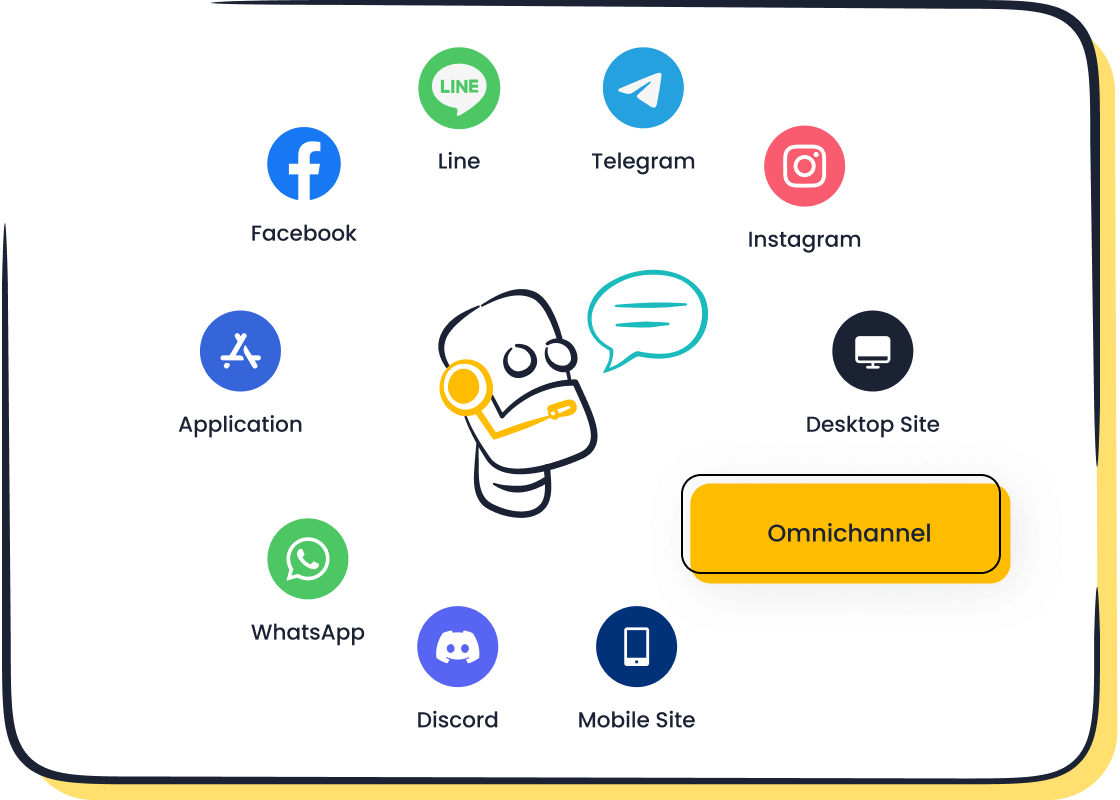
Scaling personalization can be challenging, especially for businesses managing large customer bases. Sobot Chatbot offers a powerful solution by automating interactions while maintaining a personal touch. This AI-powered tool analyzes customer data to provide tailored responses across multiple channels, including WhatsApp, SMS, and live chat. Its multilingual capabilities ensure seamless communication, making it ideal for global audiences.
The chatbot’s impact on retention metrics is significant:
| Metric | Value |
|---|---|
| Correct Answers | Over 80% |
| Customer Satisfaction (CSAT) | Over 95% |
| Self-service Question Resolution | 22.2% |
| CSAT Score | 97% |
| Reduction in Inbound Volume | 20% |
| Positive Feedback Rate | 96%+ |
| Sign-off Rate | 35% increase |
| COD Collection Rate | 40% increase |
For example, Sobot Chatbot can handle repetitive queries, freeing agents to focus on complex issues. It also uses proactive messaging to engage customers, boosting satisfaction and retention. By integrating this tool into your programs, you can deliver personalized experiences at scale, ensuring every customer feels valued.
Note: Automation doesn’t mean losing the human touch. Use Sobot Chatbot to complement your team’s efforts, not replace them.
Measuring success: Key metrics for retention strategies
Tracking the right metrics is essential for evaluating the effectiveness of your retention strategies. These key performance indicators (KPIs) provide valuable insights into customer behavior and program impact:
| KPI | Description |
|---|---|
| Customer Retention Rate (CRR) | Measures the percentage of customers a company retains over a specific period. |
| Net Revenue Retention (NRR) | Indicates the revenue retained from existing customers, accounting for upgrades, downgrades, and churn. |
Other important metrics include:
- Churn Rate: Tracks the percentage of customers who stop doing business with you.
- Net Promoter Score® (NPS): Measures customer satisfaction and loyalty based on their likelihood to recommend your brand.
For example, a high CRR indicates that your programs are successfully fostering loyalty. Meanwhile, a low churn rate suggests that customers are satisfied with your offerings. Tools like Sobot’s marketing solutions simplify the process of tracking these metrics. By providing advanced dashboards and analytics, they help you turn data into actionable insights. This ensures your strategies remain effective and aligned with customer needs.
Tip: Regularly review your KPIs to identify areas for improvement. Use these insights to refine your programs and enhance retention.
Continuous improvement: Adapting to changing customer needs
Adapting to changing customer needs requires a mindset of continuous improvement. Customer retention trends show that businesses that evolve with their audience see higher satisfaction and loyalty. To stay ahead, you must embrace strategies that allow you to refine your processes and meet customer expectations effectively.
One proven approach is adopting continuous improvement methodologies. These include Kaizen, which focuses on small, incremental changes involving all employees. Six Sigma emphasizes reducing defects and improving quality through data-driven decisions. Lean Manufacturing prioritizes waste reduction and process efficiency. By integrating these methods, you can create a culture of adaptability that aligns with customer retention trends.
For example, consider how customer preferences shift over time. A decade ago, customers valued speed above all else. Today, personalization and seamless omnichannel experiences dominate customer retention trends. Tools like Sobot’s omnichannel solutions help you adapt by unifying communication channels and providing actionable insights. These solutions enable you to identify emerging trends and adjust your strategies to meet evolving demands.
Data plays a critical role in continuous improvement. Analyzing customer feedback, purchase patterns, and engagement metrics reveals valuable insights. For instance, if data shows a decline in satisfaction among a specific segment, you can act quickly to address their concerns. Sobot’s AI Chatbot simplifies this process by collecting and analyzing customer interactions across multiple channels. This allows you to identify pain points and implement targeted improvements.
Flexibility is another key to adapting to customer retention trends. Businesses that remain rigid risk losing relevance as customer needs evolve. Regularly reviewing your strategies ensures they align with current trends. For example, if mobile-first interactions become a priority, you can leverage Sobot’s mobile-friendly tools like WhatsApp API to enhance customer satisfaction.
Continuous improvement also involves empowering your team. Training employees to recognize and respond to changing customer needs fosters a proactive approach. Encourage them to use tools like Sobot’s unified customer data platform to deliver personalized experiences. This not only boosts satisfaction but also strengthens customer loyalty.
By embracing continuous improvement, you position your business to thrive in a dynamic market. Adapting to customer retention trends ensures you stay relevant, build trust, and foster long-term relationships. Remember, the key to success lies in your ability to evolve with your customers.
Personalized approaches have proven essential for retaining customers and driving business growth. Companies like Netflix and Amazon demonstrate how tailored strategies, such as recommending shows or sending product suggestions, enhance engagement and repeat business. Even a 5% increase in retention can boost profits by 25% to 95%, showcasing the financial impact of prioritizing customer loyalty.
| Company | Personalized Approach | Outcome |
|---|---|---|
| Netflix | Uses algorithms to recommend shows based on viewing habits | Increased user engagement and retention |
| Amazon | Sends personalized emails with product recommendations | Enhanced user experience and repeat business |
| General | 5% increase in retention can boost profits by 25% to 95% | Highlights the financial impact of retention strategies |
To succeed, focus on understanding your customers’ needs and delivering tailored experiences. Tools like Sobot’s AI Chatbot and omnichannel solutions simplify this process, enabling you to scale personalization while maintaining trust. By embracing innovation and prioritizing customer-centricity, you can build lasting relationships and secure long-term success.
FAQ
What are personalized approaches in customer retention?
Personalized approaches involve tailoring interactions, offers, and services to meet individual customer needs. For example, using tools like Sobot’s AI Chatbot, you can analyze customer data to deliver relevant recommendations, boosting satisfaction and loyalty. Studies show 80% of customers prefer brands offering personalized experiences.
Tip: Start small by segmenting your audience and personalizing communications for each group.
How does Sobot help businesses improve customer retention?
Sobot provides AI-driven tools like its Chatbot and omnichannel solutions to unify customer interactions. These tools enable 24/7 support, multilingual communication, and personalized messaging. For instance, Samsung achieved a 97% satisfaction rate by using Sobot’s solutions to streamline customer service and enhance loyalty.
Learn more about Sobot’s offerings here.
Why is personalization important for customer retention?
Personalization builds trust and emotional connections, which are key to retention. Research shows emotionally connected customers have a 306% higher lifetime value. Tools like Sobot’s marketing solutions help you create tailored campaigns, ensuring customers feel valued and remain loyal.
Can small businesses implement personalized retention strategies?
Yes, small businesses can use affordable tools like Sobot’s AI Chatbot to scale personalization. Features like proactive messaging and self-service options make it easy to engage customers. For example, small retailers using personalization see up to a 30% increase in engagement.
Note: Start with simple strategies like personalized emails or targeted offers.
How do you measure the success of retention strategies?
Key metrics include Customer Retention Rate (CRR), Net Promoter Score (NPS), and churn rate. Sobot’s advanced analytics dashboards simplify tracking these metrics. For example, a high CRR indicates effective retention efforts, while a low churn rate shows customer satisfaction.
Example: Businesses using data-driven strategies report a 25% profit increase due to better retention.
See Also
Enhancing Customer Satisfaction Through Effective Live Chat Tips
Excelling in Live Chat Within the Retail Sector
Elevate SaaS Customer Support Using Live Chat Techniques
Increasing E-commerce Customer Satisfaction With Chatbot Assistance
